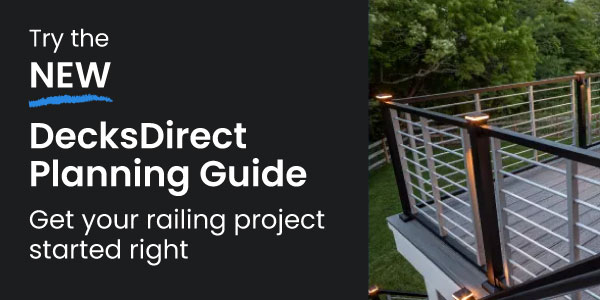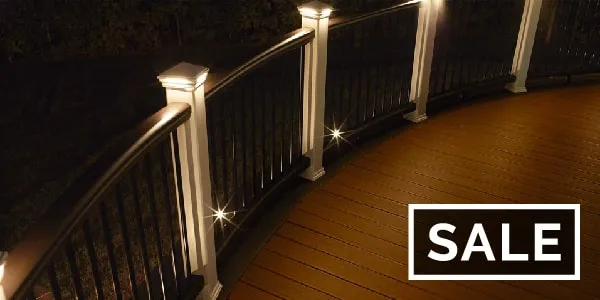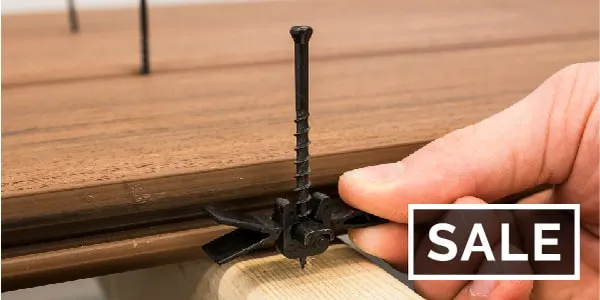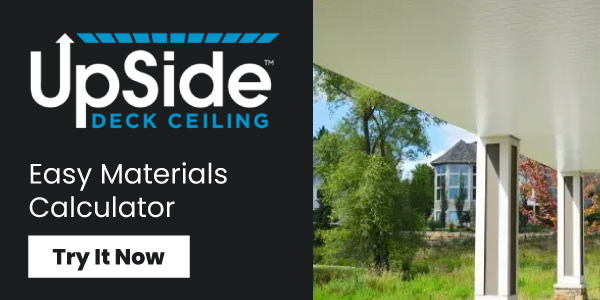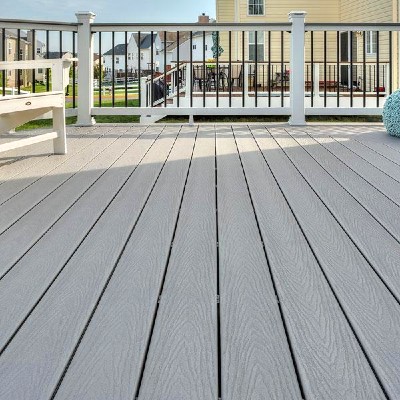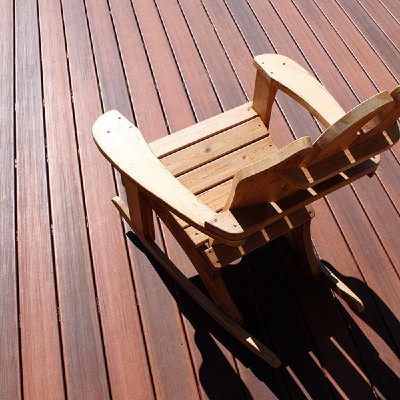Deck Board Spacing: How Far Apart Should My Deck Boards Be?
It might seem like a small detail - the gap between each board on your deck surface. But finding the proper deck board spacing for your project is crucial for creating a deck that can weather the elements and stand the test of time.
The right spacing for your deck boards will generally depend on the type of deck boards you’re using. Pressure-treated wood and hardwood decking will usually require different spacing than modern composite decking, innovative mineral-based composite decking, or strong PVC decking.
DecksDirect is your deck project guide - we believe in planning decks that will not only look great today, but last for years to come with minimal maintenance. Read on to find the right spacing for your wood, composite, or PVC boards, and call our team of experienced project planners at 1-888-824-5316 with any installation questions you have.
Table of Contents:
What Does Deck Board Spacing Mean?
Deck board spacing (sometimes called deck board gapping) refers to the thin gaps between the long edges of your deck boards. When planning your deck project, it’s important to know how much space you’ll leave between boards so you can figure out exactly how many rows of deck boards you’ll need to cover your surface area. This is even more important if you’re using any unique deck board patterns.
Why Do I Need Proper Deck Board Spacing?
Deck boards aren’t designed to be squeezed together edge-to-edge. There are a few reasons behind this. Most importantly, deck boards are built to exist outdoors, where temperatures and weather conditions fluctuate constantly. As temperatures change, deck boards expand and contract - without the right gapping, your boards can warp, buckle, or leave big, unsightly gaps in your deck surface.
In addition, leaving the right gaps between your deck boards allows water to drain away rather than gathering on your deck surface. Proper deck board spacing allows debris to drop through, while gaps that are too tight can trap debris and make it harder to clean your deck.
Determining Deck Board Spacing
Deck boards come in a range of materials: pressure-treated wood, hardwood, wood-plastic composite, mineral-based composite, and synthetic PVC, among others. Here’s how to find the proper deck spacing for each one:
Installing Natural Or Treated Wood Decking
Includes:
- Pressure-treated wood decking
- Hardwood decking
When using wood decking, you want a gap of at least 1/8 of an inch after your decking has dried out. If you’re using decking that’s already been dried out, you can leave a 1/8-inch gap when you install.
Many decks will use “green” wood, or wood that hasn’t been dried down or kiln dried. Green or wet wood will shrink as it dries out in the sun, so if you’re installing green deck boards (like green cedar, for example), it’s common to install them without a gap and let the gap open as the wood slowly dries over the first month.
Installing PVC Or Composite Decking
Includes:
- Composite decking
- Mineral-Based composite decking
- PVC decking
Composite decking expands and contracts much less than wood does. The calling card of innovative mineral-based composite is that it features almost no thermal expansion or contraction. PVC decking, meanwhile, expands and contracts differently than wood, tending to grow or shrink length-wise, while wood deck boards mostly grow or shrink in width.
Because of this range, each PVC or composite decking manufacturer tests its own products and recommends the ideal spacing for its deck boards.
Check your manufacturer’s installation instructions for the optimal spacing when planning your project. Most composite decking brands have a proprietary hidden fastener system they recommend to create a smooth deck surface with no visible screws. These systems are designed to work with the brand’s recommended deck board spacing. Even if you’re installing with face-fastening deck screws or plug systems, you should follow the manufacter’s guidelines for your deck boards.
Why Does Deck Board Spacing Matter?
- Prevents Big Gaps As Wood Dries Out
- Allows Decking To Breathe
- Permits Proper Water Drainage
- Makes For Easier Cleaning

